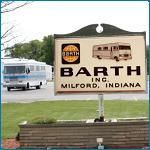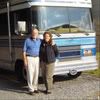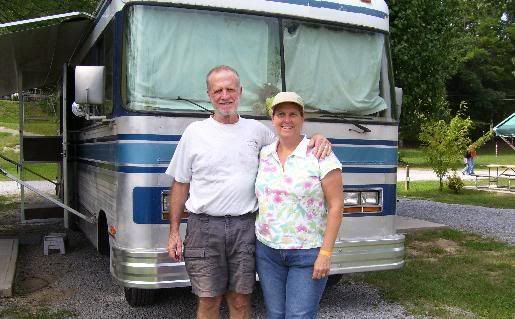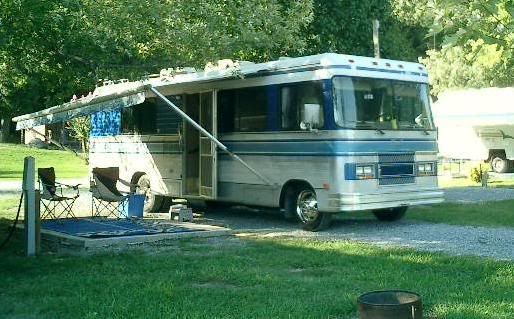Go to...  | Start A New Topic  | Search  | Notify  | Tools  | Reply To This Topic  |  |
| First Month Member |
Winter safety nag. Be careful with 1500 watt heaters. Most 120 volt receptacles do not carry that load well, regardless of how they are rated. Today, for example, I used a 1500 watt heat gun in a grounded outlet that has lead a pretty sheltered (indoors, low load) life. It is good quality, put in by me. Not only did it heat up, but the cord got hot for a foot or two. And it was a HEAVY cord. Maybe 12/3, from the size of it. The fact that the cord was cooler farther down its length is evidence that it was large enough. The connection heated up and the wire carried the heat down for a foot or so. The house wiring was put in by me, and is all one size larger than code. Any time a plug, wire or receptacle feels warm, you got trouble in River City, folks. This happened to be in the kitchen. My workbench in the shop has hospital grade outlets to take the heavy loads. Worth the money. Also use them for my tube audio gear. If you don't want to spend the money for hospital grade, just put in a new 20 amp US-made industrial or commercial grade receptacle with screw terminals, clean the wires on installation, and clean the prongs of the plug until they are shiny. ON EDIT: I should add here that if your outlet circuit is rated at 15 amps, adding a 20 amp outlet will not increase the capacity of the circuit. It will only assure a better, longer-lasting connection. If you can find it, a high grade 15 amp outlet would do the same thing. My suggestion for electric heaters is to buy one that has three heat settings, and use only the first two. That will probably limit you to 1000 watts, which leaves some headroom for typical wiring and outlets. Every winter there are fires and deaths caused by space heaters overloading wiring. It is not always just caused by unwise use of extension cords. I firmly believe that one of the causes is use of a 1500 watt load in a less-than-perfect wall receptacle. When I am King, only 1000 watt heaters will be sold. I have a friend who has a generator and has damaged several receptacles on it by running a heavy load. He tired of the expense of having repairs done by the dealer. I instructed him how to cobble up a double plug that consists of two plugs connected to the same cord, held together in perfect position with a hardwood spacer and Shoe Goo. That way, he MUST plug in two at a time, at the same time to share the load. Each plug (and its corresponding slots in the receptacle) is carrying only half the load. The same thing could be accomplished with a Y, but then only one could be plugged in (or one could come out) and the dangling one would be "hot". With the two plugs gobbed together, they both must be plugged in to be used. It is not Murphy-proof, but he is the only user, so it is OK for him. That technique could be applied to a 1500 watt heater, as well. While I am being a safety nag, I am against sleeping in a coach with any heater on. Down comforters do the job for us down to the teens outside. . 84 30T PeeThirty-Something, 502 powered | ||
|
| First Month Member |
Since I can't sing, bumping this will be my Winter Message. . 84 30T PeeThirty-Something, 502 powered | |||
|
"Host" of Barthmobile.com 1/19 1/19 |
| |||||||||||||||
| ||||||||||||||||
"I instructed him how to cobble up a double plug that consists of two plugs connected to the same cord," Ummmm, Bill, this sounds like a male to male cord to me. | ||||
|
| First Month Member |
This is different, Ed. Both male plugs are at the same end of the cord. ____________________________________________--- On Edit: Guess I took the bait, huh? . 84 30T PeeThirty-Something, 502 powered | |||
|
Gotcha! | ||||
|
 7/11 7/11 |
I see this is an older post just bumped for this winter season but I felt it best to clarify something. It is mentioned to install 20 amp receptacles on circuits where heaters or other large draw equipment is used. Simply changing the device to 20 amp is not safe if the circuit wiring is not rated for 20 amp. Using a 1500 watt heater on a 15 amp circuit is putting the entire circuit under extreme load and things will heat up, starting at the connections. Circuits should only to be loaded at 80% of the rated capacity or 1440 watts for a 15 amp circuit. Add in the possible fluctuating voltage of a generator and you have a fire waiting to happen. Tom & Jillene 1988 Regal 28' Chevy 454 8805-3538-28C-B3 | |||
|
| First Month Member |
Where is there a 15 amp receptacle circuit? A 20 amp receptacle is less likely to degrade and overheat, regardless of the wiring behind it. The human determines the load, not the receptacle. A NEMA 5-20R 20 amp duplex receptacle is rated to take the same 15 amp parallel plug that our household appliances have. And, any circuit with more than one receptacle can be overloaded.
A 20 amp load would pop the breaker in a 15 amp circuit. I don't even know of any 15 amp circuits with receptacles. The example I cited was in my house, which, per code, has 20 amp wiring and breakers for all outlets. Built in 1950. Here in CA, every circuit I have seen with breakers had 20 amps for outlets. With the older ones with fuses, it is hard to really know what is what unless they used Fustats as original equipment. However, my point in recommending the 20 amp hospital grade receptacles is the superiority of their construction and their lesser likelihood of developing problems. They look just like a standard Home Depot outlet, but make a better and more secure connection. The heat gun situation I mentioned went away with the better receptacle. I suspect a new good quality receptacle would have done the job, too, at least for a while. I also use them for my high-current vacuum tube stereo. On some passages of some music, they sound better. Are there 15 amp receptacle circuits in RVs? My oldest one was a late '50s, and it had 20 amp receptacle breakers.
Yes. That's why I said, "When I am King, only 1000 watt heaters will be sold." The condition such as you mention is really scary. A high load that does not trip the breaker is more likely to slowly start a fire if things are not just right, while a heavier load will simply trip the breaker. I suspect that a lot of the fires that are attributed to overloaded wiring are really poor connectors overheating. And don't get me started on aluminum wires or push-in connectors on the back of receptacles. . 84 30T PeeThirty-Something, 502 powered | |||
|
 7/11 7/11 |
Bill, I'm sorry if I offended you. I had no intention of doing that. I realize this is a site dedicated to the Barth RV but I believe your post was directed towards the wiring in your home. I also believe this is a public site that persons without RV's can visit and read posts. These people may not have RV's but most likely do have homes and in this time of cold weather may use heaters in their bedrooms to keep warm. I simply did not want anyone thinking that changing the 15amp receptacle in their bedroom to 20amp would allow their 1500w heater to function without any worries. California, as in every state, does require 20 amp circuits in kitchens. 20 amp circuits are now also required in bathrooms. This requirement was added mainly because of the use of high load (1500w)hair dryers. Unless California has changed their requirements since 2004 when I left the state, other circuits within the house, per the National Electrical Code, can be 15 amp with 14awg wiring. Hospital grade devices, as you state, are highly superior to others, especially the cheap ones found in most DIY box stores. I use hospital grade exclusively in my shop. Not only do they have higher quality, heavier contacts but they are also designed to limit the amount of spark that can occur when plugging or unplugging cords if under load. As we both agree, the connection is the weakest point and making sure the devise is of the highest quality will make for a much safer installation. Shame on you for even mentioning that "other" wire. Tom & Jillene 1988 Regal 28' Chevy 454 8805-3538-28C-B3 | |||
|
| First Month Member |
Good Heavens, no, I'm not offended. We pretty much agree on everything, anyway.
Nor do I. I certainly did not mean to imply that, either. My whole point was to have as good a connection as possible. Eliminating cheap, weak or worn receptacles is the first step. But, as I said, "The human determines the load, not the receptacle.", and most folks are going to plug it in if it fits. I was recommending checking for heating at the cord and offering a way to a better connection. I will edit my post to be sure no one thinks a 20 amp outlet increases the capacity of a 15 amp circuit. Sadly, few are aware of what outlet is on what breaker, so being mindful of the total load on a circuit requires a bit of work. BTW, campground receptacles often have the same problem of worn, pitted or insufficiently tight contacts.
I haven't looked at a code since I remodeled in the late 70's, but in my city, all outlets had to be 20 amp circuits. Even the original late '40s construction had 15 amp only for overhead light circuits, with 20 amp breakers for the receptacles. I suspect this is because of things like irons being used in almost any room. But, regardless of that, the average resident is going to plug in the heater(or anything else) if it fits, and is likely to be unaware of the amperage rating of the outlet or circuit. He is also unlikely to do the math to convert watts to amps, even if he is aware of the wattage of the heater. If the house has 15 amp receptacle wiring, then a 20 amp receptacle is more likely to make a better connection for the parallel plug, just because of it better construction. Of course, a high quality 15 amp receptacle would do the same thing. I think it is unlikely that the average resident is going to evaluate the outlet and make any assumptions on the load its wiring can carry. Unfortunately, the average resident is also unlikely to be aware of the capacity of the circuit, which is determined by the breakers, and the wiring. We hope that the inspector did his job, and the breakers are sized to match the wiring. This is working back to "When I am king, all heaters will be only 1000 watts." Another way to make things safer would be the use of 20 amp plugs on 1500 watt appliances. That way, they could not be plugged into whatever 15 amp outlet circuits exist. However, to get around that, we would probably see a lot of plug changing, just like how we see grounding prongs cut off. The whole problem, or potential problem, goes back to the marketing of 1500 watt devices while 15 amp outlet circuits were in use. As your example cited, a 1500 watt device is perilously close to the 80% rule of thumb limit. A poor connection makes things worse. My city got it right in allowing 15 amp circuits only for overhead lights.
Yes, getting a superior quality outlet was the whole thrust of my post. I guess I could have not mentioned anything about 20 amp receptacles, but, unfortunately, in many stores, buying a 20 amp outlet is the only way to get a better quality outlet. Hospital grade, is, of course, better yet.
As an interesting side issue, have you ever closely examined the connecting bar from one hot (or one neutral) terminal to the other on a hospital grade outlet? It is brass and seems to be pretty light to carry the rated current. I haven't actually measured its cross sectional area, but, comparing it to the correct size wire, it seems pretty thin. To make matters worse, they cut a slot in it to make it easy to break, lessening its cross sectional area even more. And then, brass is not as good a conductor as copper. On critical circuits, I take them out and run a wire to each half of the outlet. Some day, I will check their heating up under load with my Raytek.
Yeah, that was just a throwaway line. I just had wiring gripes running through my mind. . 84 30T PeeThirty-Something, 502 powered | |||
|
 6/12 6/12Formally known as "Humbojb"  |
I have two 15 amp circuits, each dedicated to a 15amp outlet originally for the use of electric blankets. They now are used for two electric heaters. The first time I plugged them in, being careful to set the heaters on 1000 watt settings, the plug on each heater got rather warm. While I replaced both receptacles with 20 amp units, I think that the real problem was a worn out receptacle making less than good contact with the plug. At any rate, neither the plug, wire or receptacle gets warm now. Think I'll probably replace the wire with 12-2 also.
| ||||||||||||
|
| Powered by Social Strata |
| Please Wait. Your request is being processed... |
|
This website is dedicated to the Barth Custom Coach, their owners and those who admire this American made, quality crafted, motor coach.
We are committed to the history, preservation and restoration of the Barth Custom Coach.
We are committed to the history, preservation and restoration of the Barth Custom Coach.





